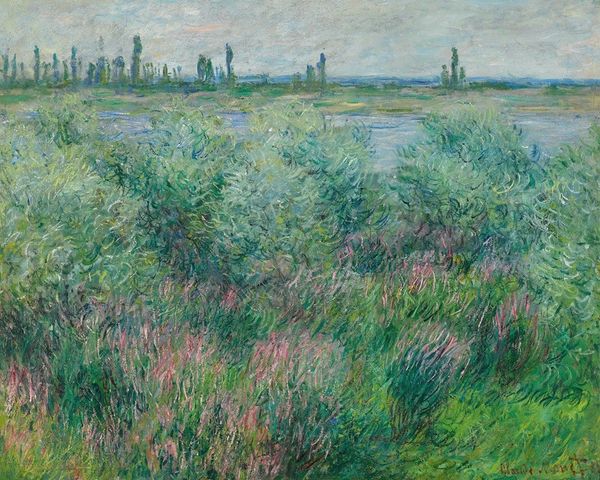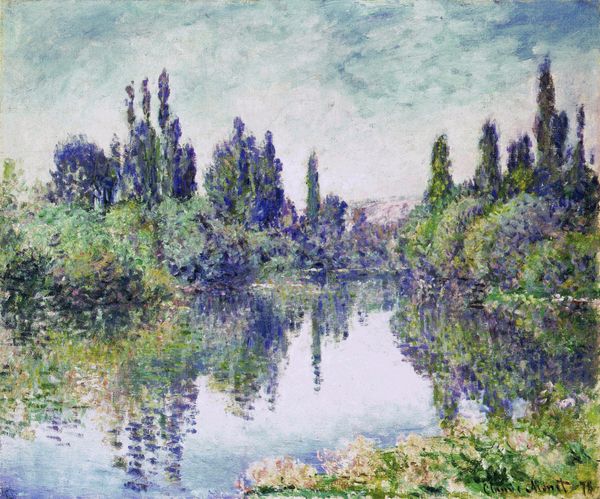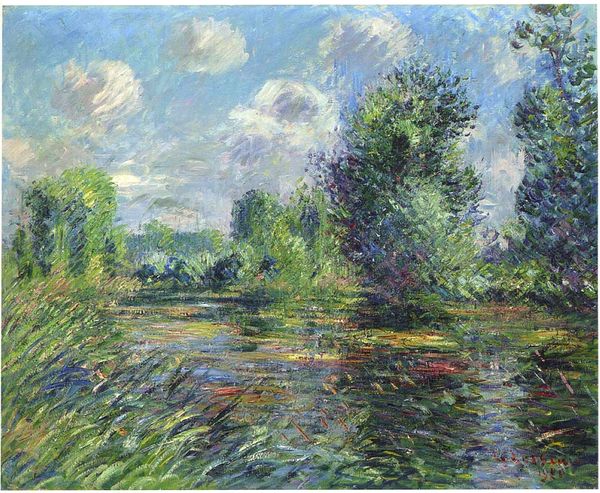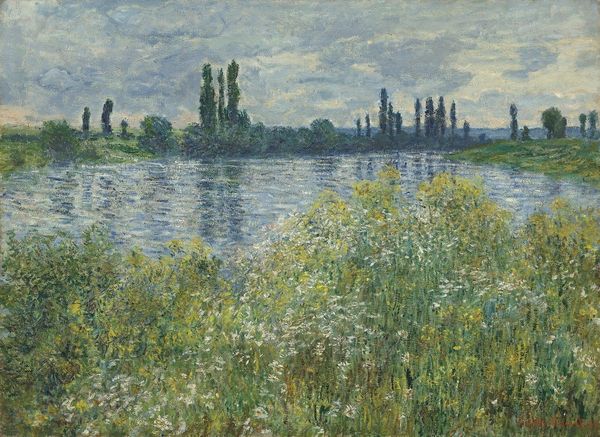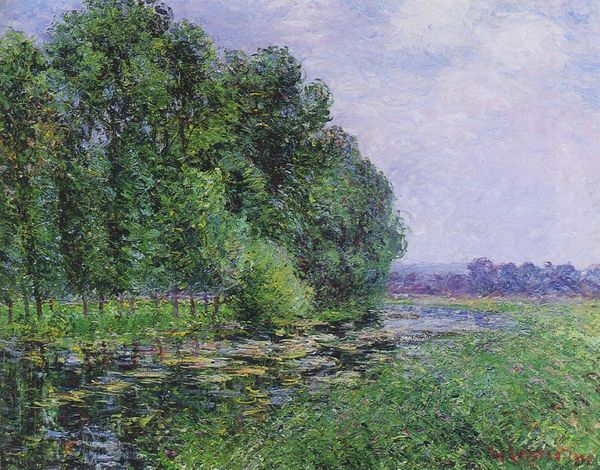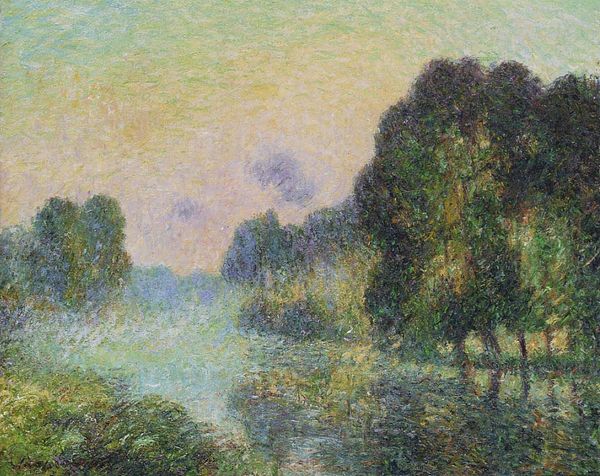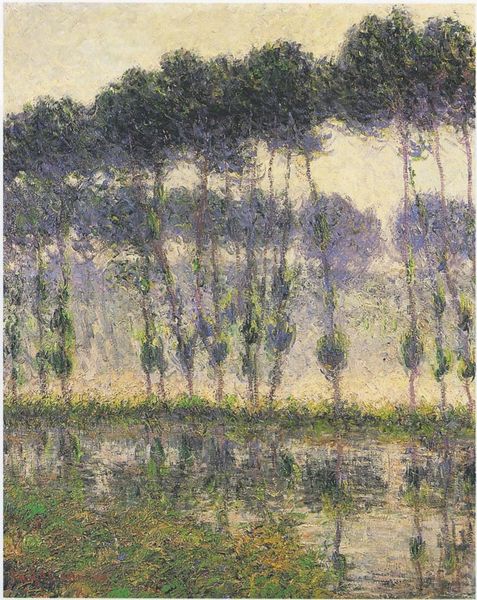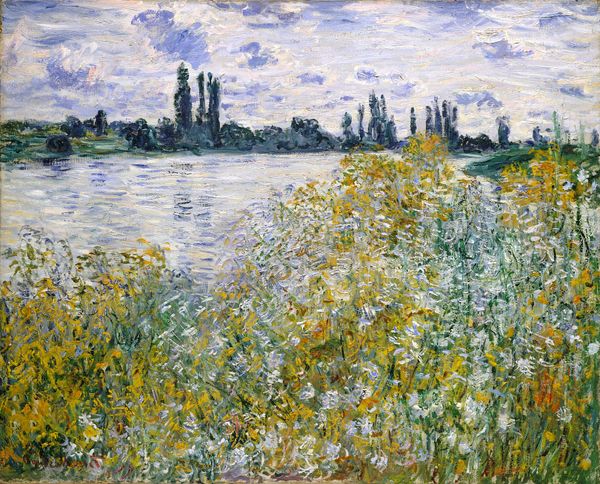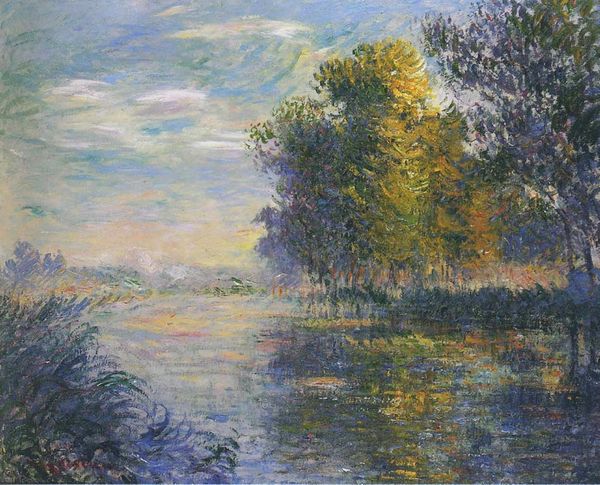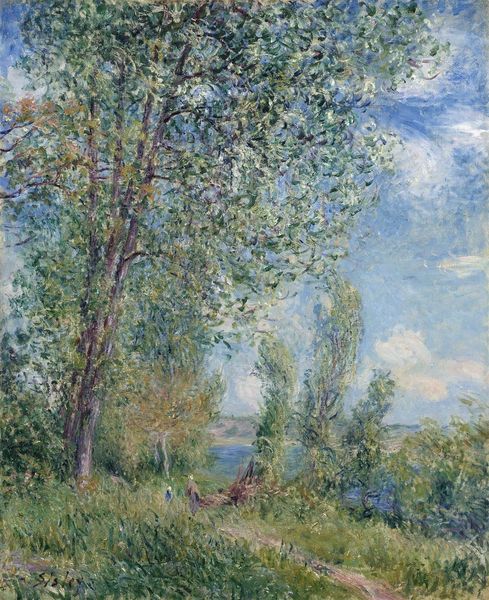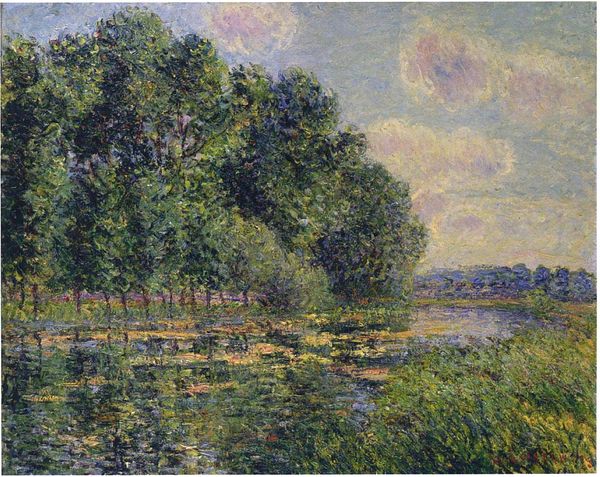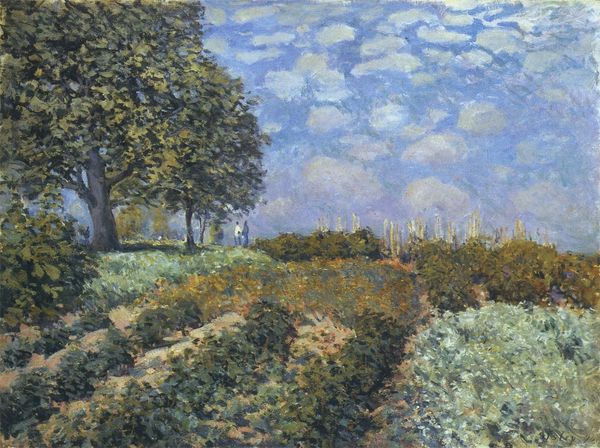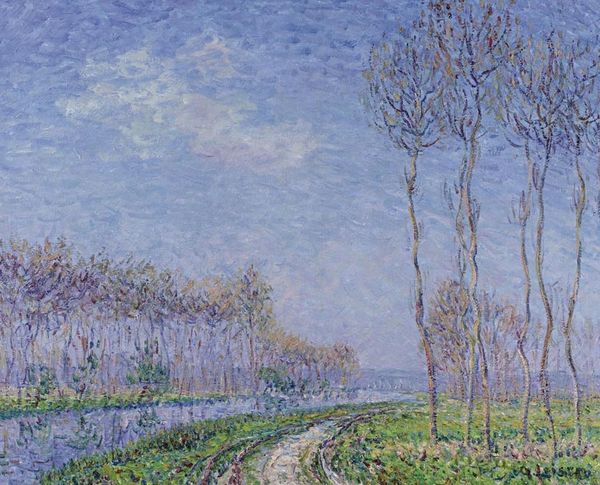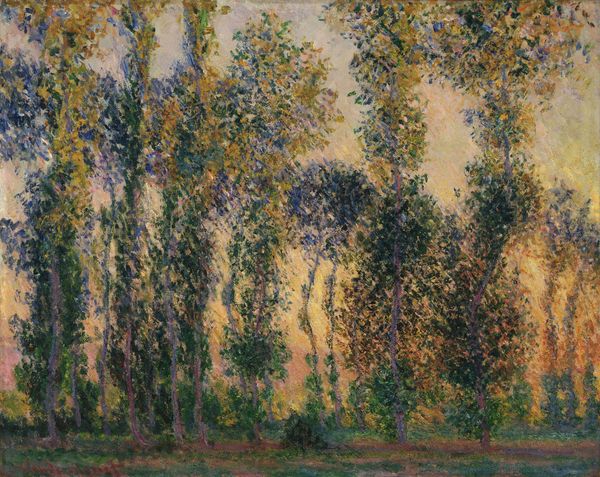
painting, plein-air, oil-paint
#
tree
#
painting
#
impressionism
#
grass
#
plein-air
#
oil-paint
#
landscape
#
impressionist landscape
#
nature
#
seascape
#
natural-landscape
#
men
#
cityscape
#
nature
Copyright: Public domain
Curator: It feels overgrown, like a secret garden just bursting with life and buzzing insects, almost overwhelmingly lush! Editor: What you're reacting to is the heart of Impressionism. Let me introduce you to Monet's "Spot on the Banks of the Seine," painted in 1881. It's oil on canvas, rendered en plein air, so directly observing and painting outdoors was central to his artistic process here. Curator: Ah, yes, the directness makes perfect sense. I can practically feel the humidity rising off that water! But isn't Impressionism all about fleeting moments? This feels...static, almost. Like a captured, overgrown scene. Editor: I think it’s precisely that tension between the ephemeral and the enduring that gives it power. The loose brushstrokes, the dappled light, they capture a specific moment. However, framing the composition through those verdant, flower-laden banks lends it a feeling of enduring stability. It feels less like a quick sketch and more like a deliberate, studied observation of the environment. Curator: And that's something you'd expect to see given the historical and societal shifts occurring in France in the 1880s. With rapid industrialization, a return to scenes of natural tranquility allowed Monet to provide visual respite for his viewers. Also, during the Belle Époque there was a yearning to express beauty within social and political turbulence. It acted, to some degree, as an expression of French cultural identity, centered around the idealized, restorative landscape. Editor: I love that context; it frames the intention perfectly. And beyond intention, what about his use of colour? Those unexpected daubs of violet and blue in the greenery make everything shimmer. Curator: Absolutely, those chromatic choices invite you in! These were, after all, conscious strategies. The development of commercially available paint tubes meant Impressionist artists were given the freedom and mobility to paint 'sur le motif', translating atmospheric qualities like these through the science of optical mixing. Editor: In truth, the impression one receives from "Spot on the Banks of the Seine" feels very vivid to the senses. Almost a tactile experience of standing amongst thick vegetation! Curator: In summary, the lush, tactile elements you've emphasized are beautifully contrasted by a considered artistic, social and historical environment—truly a dialogue to discover Monet's intention. Editor: Right—it’s more than a quick snapshot. Monet used these impressionistic means to, very deliberately, make a deeper connection with something much more complex, don't you think?
Comments
No comments
Be the first to comment and join the conversation on the ultimate creative platform.
